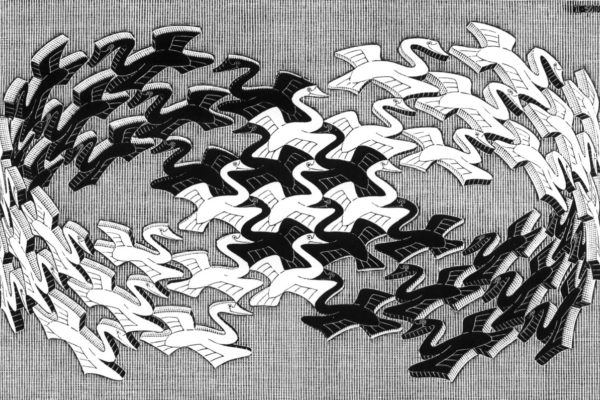
Self management is increasingly in the spotlight, touted as a new form of management for the 21st century. Companies such as Zappos, Medium and Buffer have made big, high profile bets on self management—at times grappling publicly with the challenges inherent in the transition. Frederic Laloux, Brian Robertson, Dennis Bakke and other authors have attracted broad readerships, with an increasingly large number of executives wondering whether ideas they might have dismissed as radical even a few years ago may in fact hold the keys to higher performance.
There’s something intuitively appealing, even obvious, about the notion of self management, particularly if highly directive, prescriptive management is considered the prime alternative. To the fundamental management question “who decides what?” it certainly feels the world is ready for an answer that doesn’t revolve around “the boss.”
But what is self management, really? Is there a basic essence—peer-based systems? flatness? dissolution of hierarchy? Or are many widely disparate approaches to building and running organizations living underneath the heading of self management? And—most importantly—what works? How practical are ideas like holacracy and radically flat organizational forms for new companies? How practical is it to transition established companies into these new forms?
Let’s consider three perspectives:
Frederic Laloux’s recent book Reinventing Organizations makes a far-reaching argument about stages in human evolution and how they are reflected in – and enabled by – organizational models. He sees humanity making a transition to a next organizational stage, which he labels “Teal,” using a framework of color labels from integral theory. Perhaps that sounds far out, but his ideas are becoming increasingly mainstream. Tony Hsieh, one of our generation’s best founder-CEOs, has made it central to his thinking about how to run Zappos in its next era. An April memo to all Zappos employees articulates his thinking.
Laloux sees Teal organizations as distinguished by three breakthroughs, the first of which is self management:
Teal organizations have found the key to operate effectively, even at a large scale, with a system based on peer relationships, without the need for either hierarchy or consensus.
Our second perspective is from Brian Robertson, who has played a leading role in the development of holacracy, in his recent book Holacracy: The New Management System for a Rapidly Changing World. Robertson opines:
Some companies boldly abandon convention and attempt to skip an explicit power structure altogether, or use only a minimally defined one. That can work to a point, but it presents an insidious danger: if no explicit power structure is in place, an implicit structure will emerge. Decisions need to be made and expectations set, one way or another, and social norms will develop around how those functions are carried out. Organizations that attempt to forego an explicit power structure thus end up with an implicit one, which is often quite political and somewhat resistant to change. This less-than-conscious structure may still be more effective than a conventional management hierarchy in some contexts, but I think we can do a lot better.
And a third perspective: the poster child for “skipping an explicit power structure altogether” should be Valve, about which I’ve written previously (“When Is No Hierarchy Best?”) To take a representative passage from their employee handbook:
Valve is flat. It’s our shorthand way of saying that we don’t have any management, and nobody “reports to” anybody else. We do have a founder/president, but even he isn’t your manager. This company is yours to steer—toward opportunities and away from risks. You have the power to green-light projects. You have the power to ship products.
A flat structure removes every organizational barrier between your work and the customer enjoying that work. Every company will tell you that “the customer is boss,” but here that statement has weight. There’s no red tape stopping you from figuring out for yourself what our customers want, and then giving it to them.
If you’re thinking to yourself, “Wow, that sounds like a lot of responsibility,” you’re right.
The Valve team, Laloux, and adherents of Holacracy are in full-throated agreement about what they’re against – but have some rather different ideas about what they’re for.
To navigate this contested space, and try to make practical judgments about which forms of self management fit which goals and contexts, we need to break down self management into four distinct propositions, arranged here from the least to the most radical:
- Autonomy of execution. Once an objective and constraints have been agreed, the individual owning the achievement of the objective can decide how to achieve the goal, within the relevant constraints. Those constraints can be very specific (e.g., a committee must approve capital spending needed to achieve the goal) or quite general (e.g., work within the values and cultural norms of the company). What’s important is that the constraints form steady background features of the landscape in which the work gets done, but that the owner of the objective shapes the path through this landscape.
- No “people managers.” There is no single people manager who is responsible for the fundamental HR decisions that we typically think of a “boss” making: appointment into roles, specification of objectives, evaluation of performance and decisions to move an individual out of his or her role.
- Autonomy of role selection. Individuals deploy themselves to perform the work which they believe will be most valuable and/or will be the best fit for their specific talents. There is no central authority guiding assignment of people to roles/objectives. For instance, at Valve: “Deciding what to work on can be the hardest part of your job at Valve. This is because, as you’ve found out by now, you were not hired to fill a specific job description. You were hired to constantly be looking around for the most valuable work you could be doing.”
- No explicit mechanism for setting enterprise-level strategy and objectives. The enterprise as a whole does not have a defined set of objectives or strategy that the work of individuals is supposed to “add up to.” Rather, the priorities of the enterprise as a whole emerge from the actions of individuals and groups. In the Valve employee handbook, for instance, there is a section on “How does Valve decide what to work on?” parallel to the section on “But how do I decide which things to work on?” The answer: “The same way we make other decisions: by waiting for someone to decide that it’s the right thing to do, and then letting them recruit other people to work on it with them. We believe in each other to make these decisions, and this faith has proven to be well-founded over and over again.”
These four propositions can certainly be combined. Valve, for instance, embraces all four. They can also be unlinked. The RAND Corporation, not anyone’s view of a radical New Age organization, gives its researchers autonomy to select what they’ll work on. Most project-focused organizations, such as management consulting firms, practice proposition two halfway: they do have hierarchy within the project team (e.g., McKinsey’s Engagement Director and Engagement Manager), but there is no boss who manages an individual in terms of his or her overall job. 3M creates a space with their 15% time – “to take our resources, to build up a unique team, and to follow their own insights in pursuit of problem-solving” – that functions like an “island of Valve” within a broader corporate construct. If people talk about self management without making clear which proposition(s) they’re really concerned with, they are almost certain to talk past one another.
Is there a combination of these four propositions that generally makes sense for a wide range of companies, which can serve us as a powerful baseline model? This is the first in a series of posts examining what forms of self management work best in what kinds of companies. Too much of what I’ve read on this subject is either utopian or dismissive. I believe neither of these stances is appropriate. Founders and executives should know enough about what these new organizational forms deliver and what they require to make an informed evaluation. My own investigation of these questions suggests that some of the variations of self management currently most in the spotlight, such as holacracy, will fit only a relatively narrow range of organizations, but that other forms of self management have great potential across a far broader range of contexts.



